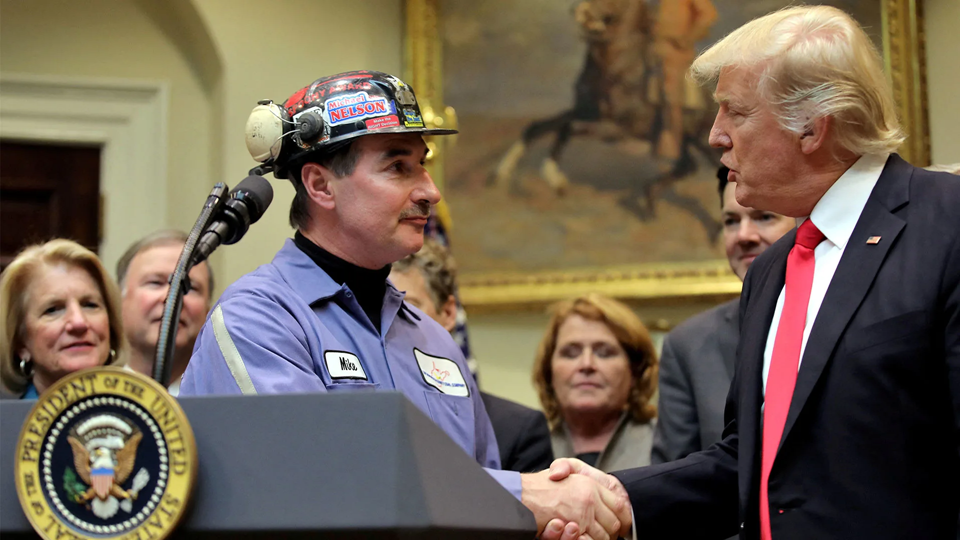4 Ways Trump plans to dismantle Biden’s climate legacy
4 Ways Trump plans to dismantle Biden’s climate legacy
Trump has promised changes that would ease permitting for new power plants and remove obstacles to fossil fuel production.
BY Reuters
Presidential hopeful Donald Trump has laid out an energy policy platform centered around maximizing U.S. fuel and power output, in part by dismantling the Biden administration’s centerpiece efforts to fight climate change.
The Republican former president’s campaign has said that President Joe Biden’s efforts to support adoption of electric vehicles while curbing the use of coal and gas poses a risk to the nation’s power grid at a time of soaring energy demand, and promised changes that would ease permitting for new power plants and remove obstacles to fossil fuel production.
In an ironic twist, the United States has become the world’s top producer of oil and gas during Biden’s tenure. Even so, Biden passed legislation through Congress and issued regulations that aim to speed a transition to cleaner energy.
Here are some of the Biden administration climate initiatives that Trump would seek to target should he win against Democratic Vice President Kamala Harris in November’s election:
POWER PLANT RULE
In April, Biden’s Environmental Protection Agency (EPA) finalized rules targeting carbon, air, and water pollution from power plants, an industry responsible for nearly 25% of U.S. carbon emissions. The rules will effectively require coal-fired power plants and new natural-gas-fired generators in the coming decade to capture emissions before they reach the atmosphere.
In a speech about his economic platform on September 5, Trump slammed the power plant rule, saying it had set the stage “for a catastrophic energy shortfall that will make inflation far worse.”
“I will immediately issue a National Emergency Declaration to achieve a massive increase in domestic energy supply,” Trump said in the speech. “With these sweeping authorities, we will blast through every bureaucratic hurdle to issue rapid approvals for new drilling, new pipelines, new refineries, and new power plants and reactors.”
VEHICLE EFFICIENCY RULES
The Biden administration announced new U.S. auto-emissions regulations in March intended to slash tailpipe pollution and push automakers to expand the production of electric and hybrid vehicles. The final rules were a watered-down version of the original proposal, giving automakers more leeway in how to meet the standards.
But they’ve still drawn the ire of the Trump campaign, which has lumped it into a group of Biden’s green initiatives that it says are distorting the markets, driving up prices, and limiting consumer choice.
Trump said in his September 5 speech that he would “end the electric vehicle mandate.”
Despite Trump’s opposition to widespread adoption of EVs, his campaign has won the support of Tesla founder Elon Musk, whose company may be able to eke out an advantage against rivals even if Trump axes vehicle pollution limits further or rolls back EV subsidies.
INFLATION REDUCTION ACT
Trump said he would “rescind all unspent funds” under the Inflation Reduction Act, Biden’s signature climate law.
The 2022 law includes hundreds of billions of dollars in subsidies for electric vehicles, solar and wind energy, and other clean energy technologies and has drawn massive investments in domestic manufacturing in those industries.
Any changes to the law would require an act of Congress.
PARIS AGREEMENT
During his 2017-2021 term as U.S. president, Trump withdrew the United States from the Paris Agreement, an international pact to fight climate change, arguing it was unnecessary and put the country at a competitive disadvantage to China.
Trump’s campaign said he’d do it again if he wins in November.
At the moment, the U.S. is a full participant in the accord, after Biden swiftly rejoined in 2021 and sought to restore U.S. climate leadership on the global stage.
—Richard Valdmanis and Timothy Gardner, Reuters
(13)



